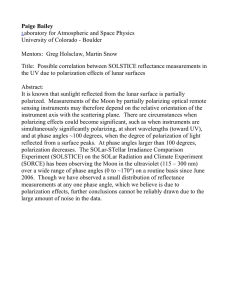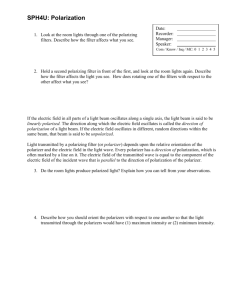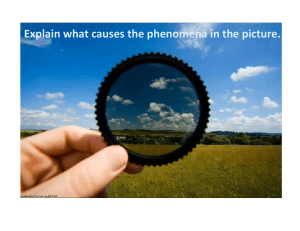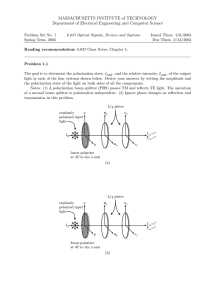Polarization in Nature
advertisement
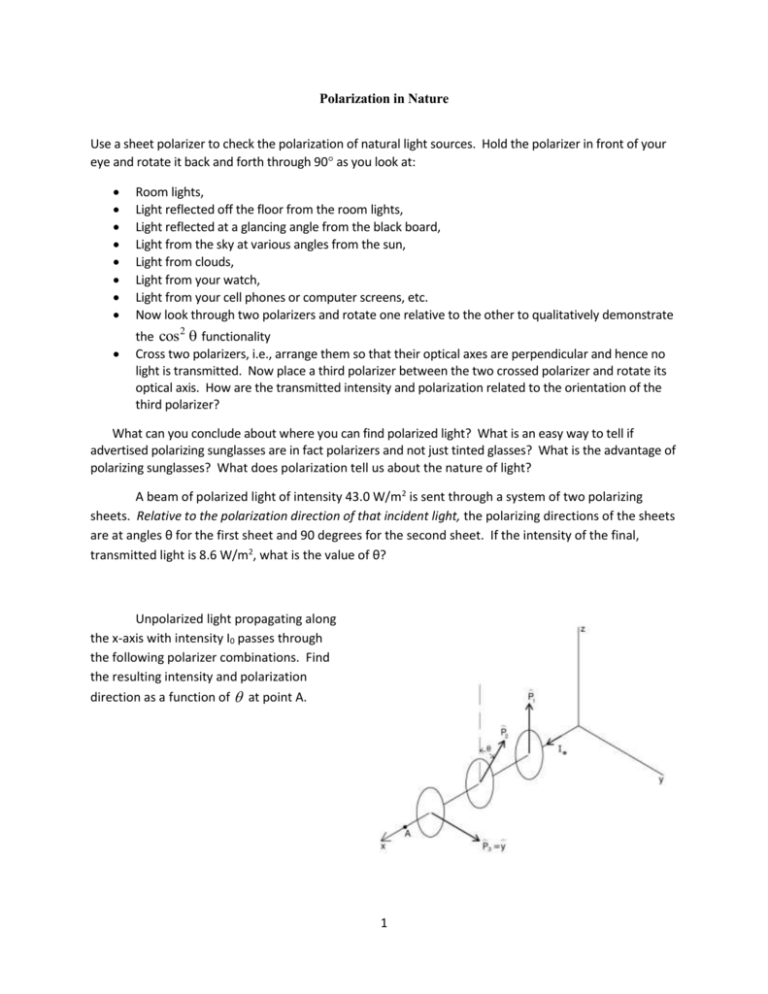
Polarization in Nature Use a sheet polarizer to check the polarization of natural light sources. Hold the polarizer in front of your eye and rotate it back and forth through 90 as you look at: Room lights, Light reflected off the floor from the room lights, Light reflected at a glancing angle from the black board, Light from the sky at various angles from the sun, Light from clouds, Light from your watch, Light from your cell phones or computer screens, etc. Now look through two polarizers and rotate one relative to the other to qualitatively demonstrate the cos 2 functionality Cross two polarizers, i.e., arrange them so that their optical axes are perpendicular and hence no light is transmitted. Now place a third polarizer between the two crossed polarizer and rotate its optical axis. How are the transmitted intensity and polarization related to the orientation of the third polarizer? What can you conclude about where you can find polarized light? What is an easy way to tell if advertised polarizing sunglasses are in fact polarizers and not just tinted glasses? What is the advantage of polarizing sunglasses? What does polarization tell us about the nature of light? A beam of polarized light of intensity 43.0 W/m2 is sent through a system of two polarizing sheets. Relative to the polarization direction of that incident light, the polarizing directions of the sheets are at angles θ for the first sheet and 90 degrees for the second sheet. If the intensity of the final, transmitted light is 8.6 W/m2, what is the value of θ? Unpolarized light propagating along the x-axis with intensity I0 passes through the following polarizer combinations. Find the resulting intensity and polarization direction as a function of at point A. 1


